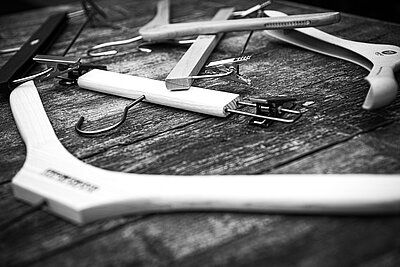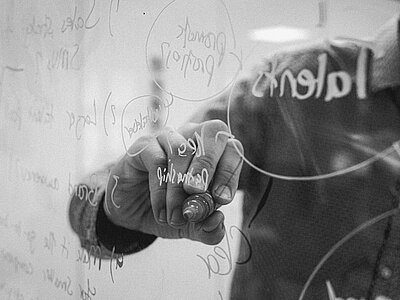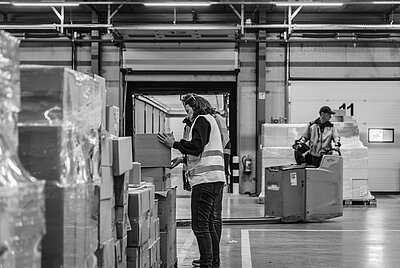Using RFID for precision and personalisation
Radio Frequency Identification (RFID) technology isn’t new, but it has gained renewed momentum in retail in recent years. RFID tags allow you to track inventory with incredible accuracy, which has plenty of benefits for running an agile supply chain. McKinsey & Company estimates that RFID technology can improve inventory accuracy by 25%.
While RFID can help reduce shrinkage and optimise your stock management, it can also bring so much more to your overall customer experience. Some retailers are using RFID to create tailored customer experiences, enabling staff to offer relevant product recommendations. With RFID-enabled smart fitting rooms, for example, customers can instantly view product information or even request different sizes or colours via a digital interface without leaving the room.
The resurgence of this technology allows you to bridge the gap between digital and in-store experiences.
European retailers have embraced RFID with remarkable results. French sports retailer Decathlon uses RFID in over 85% of its products. Its use of RFID has allowed for real-time inventory tracking and faster checkout processes. Decathlon’s system enables customers to walk through a self-checkout scanner that reads the RFID tags on all items simultaneously, speeding up the purchase process and removing the need for manual barcode scans. Not only does this make its checkout process quicker, but it also improves accessibility for people who are visually impaired or disabled.
The revival of QR codes
QR codes had a brief period of novelty in the mid-2000s, but quickly faded out of focus. Thanks to the pandemic, however, QR codes became a key player in contactless interaction. Retailers that had been forced to pivot because of health and safety protocols, began using QR codes for everything from menus in restaurants to digital catalogues in stores. Their simplicity and low cost make them an incredibly effective tool for improving customer engagement.
Post-pandemic, QR codes have continued to thrive. And they’re a great opportunity for you to blur the lines between physical and digital experiences. Your shoppers could scan a QR code to view additional product information, access special offers, or even purchase online if their size or preferred colour isn’t available in-store. QR codes are convenient, but they also help you keep customers engaged and connected across all your channels.
Zalando, the German online fashion retailer, introduced QR codes in their stores to offer a seamless shopping experience. Customers can scan the codes to access product reviews, look up additional sizes or colours, and even order items for home delivery if they’re not available in-store. This integration has allowed Zalando to merge the convenience of online shopping with the immediacy of physical retail, offering a true omnichannel experience.
Many brands, including Amazon, are also using QR codes to help customers organise hassle-free returns.
Returning to real checkouts
Self-checkouts were once heralded as the future of retail. Quick, convenient and cost-effective for retailers. But the tide is turning. Many retailers are beginning to question whether automation at the expense of human interaction really is the best option for their customers. The faceless nature of self-checkout can detract from the personalised service that many shoppers still value and be a barrier to people who have disabilities or learning difficulties.
The pandemic heightened this need for meaningful human interaction, with many customers seeking connection and assistance in stores after months of isolation. Retailers have responded by bringing back staffed checkouts, with an emphasis on human service over pure efficiency.
Booths supermarket chain in the UK has axed almost all its self-checkouts following feedback from customers. Acknowledging the difficulties customers had with particular items, like alcohol, and the decrease in personal experience, the brand has emphasised its focus on delivering a personal experience.
“Delighting customers with our warm northern welcome is part of our DNA and we continue to invest in our people to ensure we remain true to that ethos.”
Blending past and future in retail
Just as the Day of the Dead intertwines tradition with modern-day celebrations, you can bring the best of old and new practices to your retail brand.
While automation and digital tools have their place, it’s important to achieve a balance that embraces tried and tested approaches in new ways.
If you’re looking for a partner who can help you get the best of both worlds, speak to our team on +31 (0) 88 494 20 80 or email us at online@worldpack.eu.


